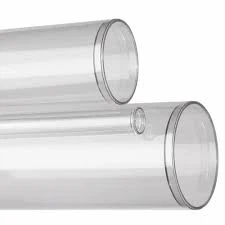Kas . 27, 2024 15:18 Back to list
Cost analysis of HDPE pipe for various applications and projects
Understanding HDPE Pipe Costs Factors and Considerations
High-Density Polyethylene (HDPE) pipes are becoming increasingly popular across various industries due to their durability, flexibility, and resistance to corrosion. The cost of HDPE pipes can vary significantly based on numerous factors, making it essential for buyers to understand these elements for budget planning and cost-efficiency. This article explores the main factors influencing HDPE pipe costs.
1. Material Composition and Quality
The primary factor influencing the cost of HDPE pipes is the material itself. HDPE is a thermoplastic made from petroleum, and its quality can vary based on the manufacturing process and the source of raw materials. Higher quality resin used in the production of HDPE pipes often leads to better performance characteristics, such as increased strength and flexibility. Hence, while cheaper options may be attractive, investing in higher-grade materials may result in long-term savings due to reduced maintenance and replacement costs.
2
. Pipe Dimensions and SpecificationsThe dimension of HDPE pipes, including diameter, length, and wall thickness, directly impacts the price. Larger diameter pipes typically cost more due to the increased material usage and complexity of production. Additionally, pipes designed for specific applications, such as high-pressure systems or those with tighter tolerances, will also come at a premium. Thus, understanding the necessary specifications for your application is crucial in determining the overall cost.
3. Manufacturing Process
HDPE pipes can be produced using various manufacturing techniques, including extrusion and injection molding. The extrusion process is more common and generally less expensive, but it may limit the types of fittings and joints available. On the other hand, injection molding can create complex shapes and sizes but may lead to higher production costs. The choice of manufacturing method significantly influences the overall cost of the pipes.
hdpe pipe cost

4. Market Demand and Supply Chain Issues
Supply chain dynamics and market demand can heavily affect HDPE pipe pricing. For instance, fluctuations in oil prices can impact the cost of polyethylene resin, thus influencing the overall pricing of HDPE pipes. Additionally, during construction booms or natural disasters, demand for HDPE pipes can surge, leading to price inflation. Buyers should monitor market trends and consider purchasing during stable demand periods to secure lower prices.
5. Transportation and Logistics
Another essential consideration in the cost of HDPE pipes is transportation. Depending on the distance from the manufacturer to the project site, shipping costs can add significantly to the final price. Bulk purchases may help reduce transportation costs per unit, but it's essential to evaluate storage capabilities and project timelines. Some manufacturers offer local delivery options that can minimize logistics costs.
6. Installation Costs
Finally, it is vital to account for installation costs when budgeting for HDPE pipes. While the pipes themselves may be affordable, the cost of joining the pipes, trenching, and ensuring proper placement and alignment can add up quickly. Utilizing skilled professionals who understand the specifics of HDPE installation can help avoid costly mistakes and ensure a longer service life from the pipes.
Conclusion
The cost of HDPE pipes can be influenced by various factors, including material quality, dimensions, manufacturing processes, market conditions, transportation logistics, and installation expenses. By carefully evaluating these aspects, buyers can make well-informed decisions that align their budget with the necessary performance and longevity requirements of their applications. In an era where efficiency and sustainability are paramount, investing in the right HDPE pipe solutions can provide significant long-term advantages.
-
High-Quality PPR Pipes and Fittings Durable ERA PPR & PVC PPR Solutions
NewsJul.08,2025
-
Black HDPE Cutting Board - Durable, Non-Porous & Food Safe HDPE Plastic Cutting Board
NewsJul.08,2025
-
High-Quality CPVC Panel Durable HDPE & PVC Panels Supplier
NewsJul.08,2025
-
Double PE Welding Rod Supplier - High Strength, Durable & Versatile Welding Solutions
NewsJul.07,2025
-
High-Quality PVC-O Pipe Supplier Durable 75mm PVC Pipe & Connections Leading PVC Pipe Company
NewsJul.07,2025
-
HDPE Drainage Pipe Supplier – Durable & Corrosion-Resistant Solutions
NewsJul.06,2025

